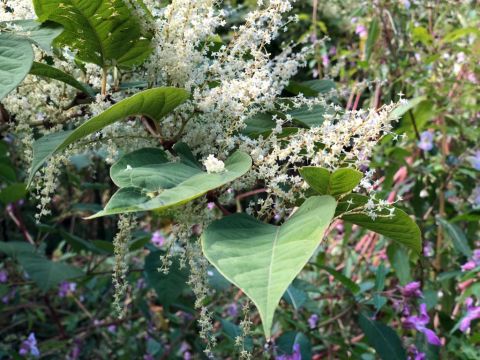Researchers in Galway have come up with a potential way to tackle infestations of Japanese knotweed, the invasive plant particularly common in urban settings.
A research study from NUI Galway has found that the removal of moisture could act as a potential control strategy. The findings show that incorrect herbicide treatment cannot control the growth and regeneration of the plant, but that fully drying the plant material in a lab environment allowed it to be returned to the soil without risk of regrowth.
Japanese knotweed (Reynoutria japonica) is a problematic invasive plant found in many areas of Europe and North America. Notably, in the UK, the species can cause issues with mortgage acquisition.
It can grow up to two to three metres in height and can dominate an area to the exclusion of most other plants. Control of Japanese knotweed is complicated by its ability to regenerate from small fragments of plant material; however, there remains uncertainty about how much rhizome is required and how likely successful regeneration is under different scenarios.
The study, published in the journal PeerJ was carried out by NUIG in collaboration with infrastructure consulting firm AECOM and University of Leeds.
Senior author of the study, Dr Karen Bacon of the Ryan Institute, NUI Galway, said: “Japanese knotweed is one of the most invasive plant species in the world and has major negative impact on ecology and biodiversity. The findings of this study that showed virtually no difference between the regrowth of treated and untreated Japanese knotweed samples suggest that herbicide treatment, which is often the most suitable approach to tackle the species, is not always being done effectively.
“We also show clearly that the size of the plant fragment is critical to the initial regrowth, with smaller fragments producing much smaller regrown plants. Additionally, if there are no nodes, there is no regeneration, which may suggest potential management strategies in the future. This also highlights that small infestations and plants should not be viewed with the same concern as larger ones and that rapid management should be a goal of tackling this problematic species.”
Dr Bacon said: “Our finding that the removal of moisture has a 100% success rate on killing Japanese knotweed plants and preventing regrowth after they were replanted also raises an important potential means of management for smaller infestations that are common in urban environments. This requires additional field trials, which we hope to undertake in NUI Galway soon.”
Dr Mark Fennell, Associate Director at AECOM and co-author of the study, said: “Our key finding, that drying out the plant effectively kills it, should provide reassurance to landowners that the plant is not as indestructible as is often stated. While this invasive species remains a problem plant that can have a negative impact on biodiversity, our research provides a better understanding of the plant, paving the way for the development of more efficient and cost-effective ways of dealing with it. We hope our research helps to challenge some of the popular stigma that surrounds Japanese knotweed.”







